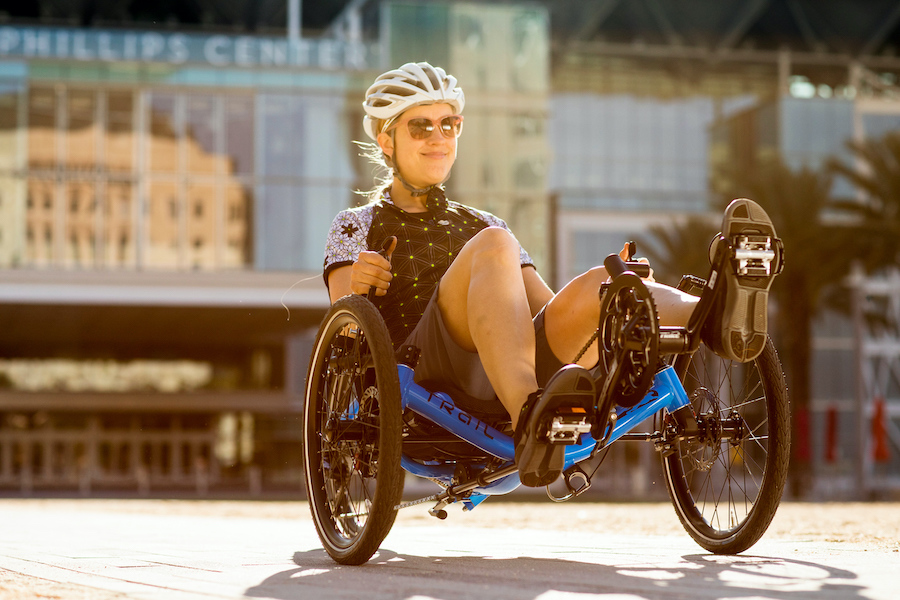Five Quick Tips to Keep Your Trike (or Recumbent) Tip-Top

Special thanks to our Celebrate Trails Day 2022 sponsor Catrike for these great tips on how to care for your recumbent or trike!
For other tips and info on how to choose a recumbent that’s right for you, check out this February 2021 blog by Rails-to-Trails Conservancy member and rider Jack Kurrle.
RELATED: CONSIDERING A RECUMBENT BIKE? HERE ARE SOME TIPS TO KEEP IN MIND.
Here are things you can do to make sure your trike runs smooth and looks good every time you ride.
1. Check your tire pressure every time you go out for a ride.
Tires can lose air over time, and even if your tire or tube does not have a leak, they will still lose air. The recommended tire-pressure range is printed on the sidewall of your tire. Over- or underinflated tires can cause premature wear.
2. Keep dirt and grime off your drivetrain components.
This includes the chain, cassette, chain rings, derailleurs, etc. Use a grime brush, old toothbrush or air compressor nozzle to get rid of the dirt, dust and road debris. Dirty drivetrains make noise, diminish performance and may cause premature wear.
3. Keep your trike frame clean.

A clean trike frame may not improve performance, but it is a good habit to check your frame for cracks, dings and other damages every once in a while—and what better way to do that than while cleaning it thoroughly.
Use a soft cloth or soft brush to clean dust and road grime off your frame. If you choose to use water or a cleaning solution, make sure you keep it away from bearing surfaces like the head set and hubs. (You may use a bike or automotive specific wax on Catrike powder coated finishes.)
4. Check fastener nuts and bolts periodically.
Make sure handlebars, brake levers, pedals and wheels are adjusted and tightened properly. We recommend using grease on threaded surfaces like handlebar bolts and pedal spindles. This reduces the chance of corrosion and ensures an easy removal when needed.
5. Check the mechanical functions of your trike every few rides.
Make sure your brakes, shifters and derailleurs work properly for every ride. Brake and shifter cables stretch as you use them and that can cause diminished performance. Especially in the first two to three months (with regular use), it is recommended to take your trike back to the dealer or local bike shop to readjust your brake and shifter cables.
Note: Ask your dealer or mechanic at the time of purchase [or time of trike acquisition] about their tune-up programs or included service. They can inform you of the recommended service intervals and when certain components need to be adjusted or replaced.
RELATED: USEFUL BIKING GEAR FOR TRAILS—PLUS A FEW MACGYVER TIPS!

Donate
Everyone deserves access to safe ways to walk, bike, and be active outdoors.
